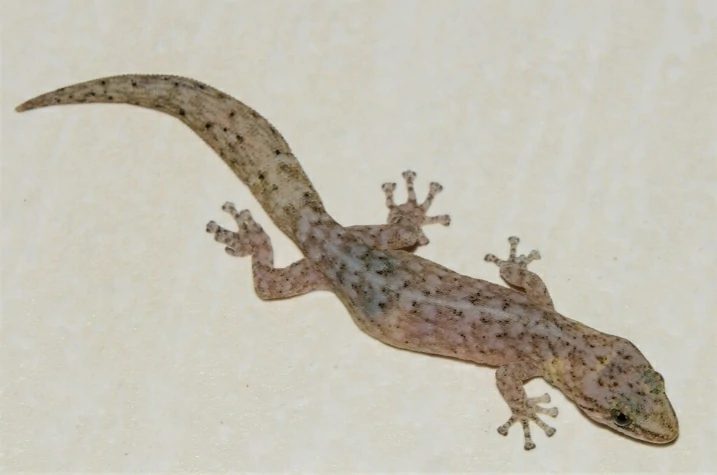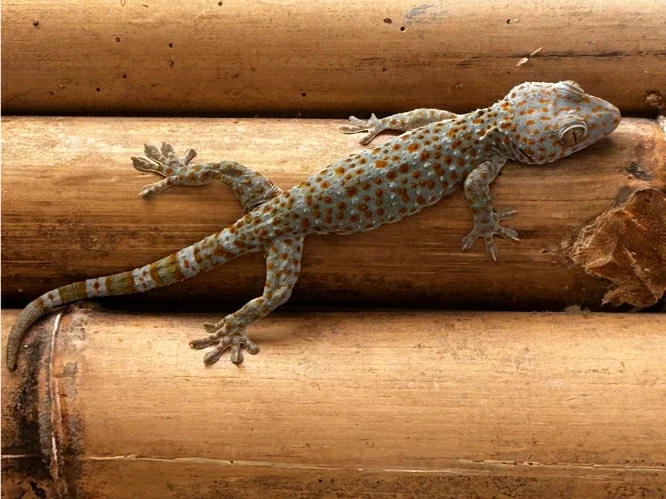If you’ve ever seen a lizard dash across your yard or climb a wall, you might have noticed something really strange: its tail suddenly twitches and then sometimes it just falls off.
It can be a little shocking, and your first thought might be, “Whoa, is it bleeding? Is it hurt?” Tail-dropping is one of those weird tricks lizards have that makes you stop and wonder how nature came up with something so dramatic. But do lizards actually bleed when they lose their tails?
No, most lizards don’t bleed much when they drop their tails. Their tails have special weak spots and muscles that squeeze shut to stop blood flow fast. A tiny bit of blood might appear sometimes, but it usually stops right away. This makes dropping a tail a safe way for a lizard to get away from danger.
Tail-dropping, or autotomy, is a survival trick lizards have been using for millions of years. It’s meant to keep blood loss low, reduce pain, and give the lizard a chance to run away from predators.
The tail is built to come off in a way that keeps the lizard safe.
It’s kind of amazing when you think about it. A predator grabs the lizard and suddenly the tail is wriggling all by itself.
That twitching can give the lizard just enough time to escape while the predator is distracted.
Why Lizard Tails Don’t Bleed Much After Dropping Their Tail
The secret is in the tail’s anatomy. Not all lizards can drop their tails, but the ones that can have something called fracture planes. Think of them like weak spots in the tail bones that let it break off easily when pressure is applied.
The muscles around these spots are special too. When the tail comes off, the muscles squeeze and close the blood vessels almost instantly.

This is very important because without this, a lizard could bleed too much every time it lost its tail. Imagine losing a limb like that, without the blood control it could be dangerous.
Nature basically made the tail something a lizard can give up safely.
Some lizards even have fracture planes in more than one spot along the tail. That means if a predator grabs the tail near the tip, the tail can break there instead of at the base, keeping the lizard’s main body safe.
It’s all about giving the lizard the best chance to survive an attack.
Do All Lizards Drop Their Tails the Same Way?
Not really. Tail-dropping works a little differently depending on the species. Some lizards can lose almost the whole tail at once, while others might just lose the tip.
Geckos, skinks, and anoles are classic tail-dropping lizards. Some skinks, like the blue-tailed skink, even have bright tails that make predators focus on the tail, leaving the lizard’s body alone.
When the tail drops, it often twitches for a long time, which can distract predators even more.
Other lizards, like some iguanas or bigger species, can drop their tails too, but it doesn’t happen as often. Losing a tail might hurt more, and there’s sometimes more visible blood, though it’s still usually not much compared to cutting off a limb in other animals.
So whether you see a tiny garden lizard flick its tail or a bigger lizard suddenly drop its tail in a panic, the main thing is that bleeding is controlled and usually very small.
Seeing it in action can be shocking, but it’s really just nature doing its job.
What Happens to the Tail That Drops?
Once the tail is gone, it’s on its own. It doesn’t survive or reattach. But the tail often keeps wiggling and twitching for several minutes, sometimes even longer.

This happens without the lizard controlling it; it’s just the tail muscles moving on their own. For predators, this is super distracting and gives the lizard a better chance to escape.
It’s kind of like a cartoon. The lizard runs off while the tail keeps moving, and a bird or snake gets stuck staring at the squirming tail instead.
It’s a simple but clever trick that has helped lizards survive for millions of years.
Does It Hurt the Lizard?
You might be thinking, “If a lizard can drop its tail so easily, does it even feel pain?” Well, yes and no. Lizards can feel injury, so losing a tail is stressful and probably hurts a little.
But tail-dropping is an emergency move, and in a life-or-death situation, survival matters more than discomfort.
Lizards can regrow their tails, although the new tail isn’t always the same. In many species, the new tail is mostly cartilage instead of bone and may be shorter, less flexible, or a different color.
Even so, it still helps with balance, storing fat, and other important jobs. So the lizard survives, and the small pain of losing a tail is worth getting away from a predator.
When Do Lizards Drop Their Tails?
Lizards don’t drop their tails for fun. It’s an emergency move, not a first line of defense. Most lizards only drop their tails when they’re grabbed or threatened in a way they can’t escape.
For example:
-
A bird swoops down and grabs a gecko by the tail. The lizard drops the tail, wiggles free, and runs to cover.
-
A cat grabs a skink in its paw. The skink’s tail comes off at the tip, and the skink disappears into the grass while the cat is distracted.
Sometimes lizards even drop their tails when caught by humans. Pet owners or curious kids may notice this if they grab a lizard by the tail, and it can be a little shocking.

Again, there’s usually very little bleeding, and the lizard’s body is mostly fine if it’s handled gently afterward.
Why Don’t Lizards Bleed Like Other Animals?
The main reason lizards don’t bleed much is that their bodies evolved to make the tail something they can give up safely.
Unlike mammals, where cutting off a limb usually leads to heavy bleeding, lizards have weak spots in the tail bones, special muscles, and blood vessel control to handle losing a tail.
Tails also do other jobs beyond just being expendable:
-
Fat storage: Many lizards store fat in their tails, so losing a tail can lower energy reserves for a while.
-
Balance and movement: The tail helps with climbing, running, and even swimming in some species. Losing it is a hit, but better than being eaten.
-
Communication: Some species use tail movements to signal danger or attract mates. Losing a tail can change that behavior for a little while.
Even with these costs, escaping predators is much more important. That’s why the lizard’s tail is built to break cleanly with very little bleeding.
How to Help a Pet Lizard That Drops Its Tail
If your pet lizard drops its tail, it’s usually not life-threatening, but you’ll want to keep it safe and comfortable:
-
Don’t panic. Tail-dropping is natural and usually won’t cause much bleeding.
-
Keep the lizard in a calm, safe spot. Don’t handle it too much while it’s stressed.
-
Watch for infection. Even if bleeding is small, the break can get irritated. Keep the enclosure clean.
-
Give good food. Fat stores are lower after losing a tail, so nutrition helps recovery.
-
Don’t try to fix the tail. It will regrow naturally over weeks or months depending on the species.
Over time, your pet lizard will adjust, regrow its tail, and carry on just fine. Tail-dropping is stressful, but usually not dangerous.
Fun Facts About Lizards and Tail Dropping
-
Some lizards’ tails can wiggle for up to 30 minutes after coming off, keeping predators distracted longer than you might expect.
-
Certain species have tails that flash colors, making predators focus on the tail instead of the body. Losing the tail is part of the survival show.
-
Even some water-loving lizards, like certain skinks, use tail-dropping to escape fish or other water predators.
Tail-dropping isn’t just something curious to watch, it’s a survival trick that lizards have perfected over millions of years. And it all happens with very little bleeding, which is really impressive.
Conclusion
So, do lizards bleed when they drop their tails? Usually, only a tiny bit, if any. Their bodies are built to keep blood loss low, making tail-dropping a safe escape tool.
The tail might twitch and squirm for minutes, drawing a predator’s attention, while the lizard gets away with very little harm. It’s a simple but clever trick of nature.
Next time you see a lizard dash off, leaving its tail behind, don’t worry about blood, it’s just part of its emergency escape plan.
And while the tail is gone, the lizard is still alive, well, and ready to grow a new one, going on with life like nothing happened.
It’s one of those really interesting little survival tricks that nature came up with, and it’s honestly cool to watch.
Hi, my name is Ezra Mushala, i have been interested animals all my life. I am the main author and editor here at snakeinformer.com.

